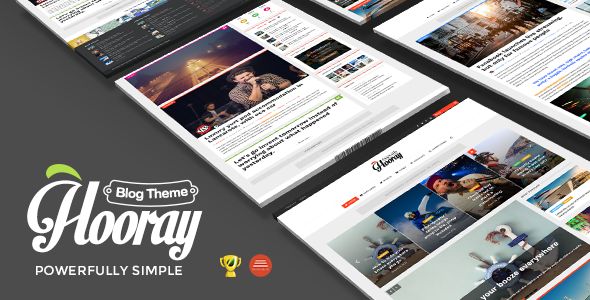Choose Your Desired Option(s)
×
- Description
- Reviews
- FAQ

If you run more than one store—or if you like to build in staging before you ship—license friction is the last thing you need. The GPL-licensed edition of Vineta – Multipurpose WooCommerce WordPress Theme is designed for that reality. You can install it on unlimited domains, keep staging and production side by side, migrate freely between hosts, and still enjoy the complete feature set with updates that stay in step with the official release. In everyday ecommerce terms, that means faster launches, consistent design across brands, and fewer blockers when you want to duplicate a winning layout into a new vertical.
What follows is a practical, human-written deep dive into Vineta – Multipurpose WooCommerce WordPress Theme—how it helps you present products clearly, reduce friction at checkout, and scale catalog complexity without turning your storefront into a maze. You’ll also find implementation notes for performance, SEO, accessibility, and long-term maintainability, all geared toward people who need to ship.
✅ Product Overview
Vineta – Multipurpose WooCommerce WordPress Theme is a clean, conversion-minded foundation for online retail. It wears many hats—fashion, electronics, home & living, beauty, DTC consumables, niche hobby stores—and it does so with a calm design system that lets your product photography and copy do the talking. Expect thoughtful grid behavior, legible typography, and micro-interactions that signal state without slowing the page.
Underneath the polish, Vineta provides the pieces you actually use: multiple shop grid variations (classic, masonry, metro), product cards with quick add, badges and stock cues, mega menu and smart header layouts, filter drawers that don’t overcrowd mobile, product detail templates that prioritize price and options, cart/checkout flows tuned for fewer surprises, and a content engine (blog, lookbooks, guides) that supports long-form storytelling when you need it.
Because this is a GPL-licensed edition, you’re free to keep your best patterns and replicate them across unlimited storefronts. That’s gold for agencies, multi-brand retailers, and founders who prefer to test new offers in microsites before rolling them into a flagship store. And since updates track the official release, you don’t trade freedom for stability—you get both.
✅ What Makes Vineta Work (Day-to-Day)
1) Product cards that communicate quickly
Shoppers skim. Vineta’s cards surface the essentials: thumbnail that respects aspect ratio, concise title, clean price (with sale math handled), and badges for “New,” “Low stock,” or “Free shipping.” Hover states expose a secondary image or quick-add without jerking layout. On mobile, a tap opens options in a tidy sheet so the grid stays compact.
2) Filters that guide, not overwhelm
A left column on desktop becomes a drawer on mobile with chips for size, color, brand, price, rating, availability, and any custom attributes you define. Active filters convert into pills above the grid so users can remove them in one tap. Sorting stays visible—no “Where did the sort go?” hunting.
3) Product detail pages built for decisions
The first view shows gallery, title, price, options, primary CTA, and shipping/returns cues. Tabs and accordions handle description, specs, care, sizing, ingredients, or compatibility. Review summaries sit close to the price block; full reviews drop further down. If the product has variants, the option picker is readable and expresses stock per variant to avoid post-selection error messages.
4) Merchandising beyond the grid
Collections, lookbooks, editorial sections, landing pages for seasons or events, and bundles are all supported. You can tell stories without a custom build: pair photography with short copy blocks, add inline product callouts, keep the buy button nearby.
5) Cart and checkout with fewer surprises
Mini-cart is present but restrained. In cart, estimated shipping/tax appears early; in checkout, field order is conventional and readable. Error states are clear, and there’s room for trust badges without shouting. Upsells exist but never hijack the path to payment.
6) Multistore and regional readiness
You can operate parallel sites (e.g., US, EU, wholesale) with shared components and styling but distinct currencies, tax notes, or shipping logic. The theme’s design system keeps all variants cohesive.
7) Performance-sane by default
Responsive media, aspect-ratio utilities that prevent layout jumpiness, limited render-blocking assets, and clean DOM structure give you a fighting chance at strong Core Web Vitals even on mid-range phones.
8) Update-safe customization
Use a child theme for CSS/JS tweaks and any PHP filters. Because updates are synced with official, you capture refinements and security fixes without trampling your work.
Use Cases (With Concrete Tips)
-
Fashion & Apparel: size and color swatches, fit guidance, care instructions, model stats in a compact block, and a “complete the look” bundle that doesn’t overshadow the main CTA.
-
Beauty & Wellness: ingredients panel with tooltips, routine pairings, allergen callouts, and subscription options presented as a simple toggle near quantity.
-
Home & Living: dimension tables with metric/imperial switch, material notes, and room-scene gallery images; cross-sell complementary items with measured restraint.
-
Electronics & Gadgets: spec sheets that collapse; “what’s in the box” checklist; warranty and support summary placed near price; comparison tables with column lock on mobile.
-
Hobby & Niche: compatibility notices (“fits X/Y/Z models”), downloadable guides, and community photo reviews to build trust.
-
Food & DTC Consumables: variant picker for flavors/pack sizes, subscription vs. one-time purchase logic, and delivery ETA windows kept honest.
Because you can deploy Vineta – Multipurpose WooCommerce WordPress Theme across unlimited sites, you might dedicate one store to rapid tests (new navigation, aggressive bundles, or subscription defaults) and keep your flagship conservative. When a test wins, clone the layout into production instead of reconstructing it from memory.
Design System Notes (So Your Store Feels Engineered)
-
Typography: One clean sans for UI and body, optional display weight for headings. Stick to 3–4 weights total for speed and discipline.
-
Color: Neutral base with one action color for CTAs and a gentle secondary for badges. Reserve saturated backgrounds for small “sale” bands or announcements; not full sections.
-
Spacing: A 4/8/12/16/24/32 scale keeps components aligned. Cards, filters, and product modules already snap to it; resist one-off paddings.
-
Motion: Subtle fades for modals, short micro-transitions on hover; respect
prefers-reduced-motion. Avoid carousels in the first viewport. -
Iconography: Only where copy benefits (shipping, returns, warranty, eco note). Always pair with text.
Page Blueprints You Can Copy Tomorrow
A) Home (Revenue-First)
-
Hero with one strong image, short promise, and a single primary CTA.
-
Trust strip (free shipping threshold, returns window, secure checkout).
-
Featured collections (2–4), each with a short line and a “Shop now” button.
-
New arrivals grid.
-
Social proof: review snippets or UGC strip.
-
Editorial or lookbook teaser.
-
Final CTA bar with an incentive (newsletter, free samples, bundle discount).
B) Category / Collection
-
Title, optional blurb, and a compact filter drawer.
-
Grid with consistent image ratios and readable titles.
-
Pagination kept near the bottom with “show more” that doesn’t break SEO.
-
Optional banner for seasonal messaging (keep it small).
-
Related categories or “Recently viewed” to aid back-and-forth browsing.
C) Product Detail
-
Gallery (first image optimized), title, price, options, primary CTA, shipping/returns snippet.
-
Short pitch (3 bullets), then accordions for details/specs/care.
-
Review summary with quick link to full reviews.
-
Cross-sells: sensible, two rows max.
-
FAQ focused on the product, not generic store policy.
D) Cart & Checkout
-
Cart: line items, thumbnail, variant clarity, editable quantity, shipping estimator.
-
Checkout: minimal distractions, address before payment, clear error feedback, order summary sticky on desktop.
-
Post-purchase: sincere thank-you with next steps (processing time, tracking window, customer support hours).
E) Editorial / Guides
-
Table of contents, short sections, inline product callouts, and a soft CTA at the end.
-
Use these to intercept search queries and reinforce the brand.
Performance & Core Web Vitals (Practical Checklist)
-
Export hero/gallery images as WebP/AVIF and define width/height or
aspect-ratioto prevent CLS. -
Keep the first viewport ultra-lean: headline, one great image, primary CTA—no sliders.
-
Preload only the primary text font; defer icon fonts or extras.
-
Defer analytics and chat until interaction or idle.
-
Inline critical CSS for the first screen; load the rest asynchronously.
-
Enable caching and ensure mobile caching is on; use an image CDN.
-
Avoid loading recommendation carousels above the fold; keep them below the primary decision area.
-
Test on a mid-range phone over 4G. If it feels snappy there, you’re on the right track.
Vineta – Multipurpose WooCommerce WordPress Theme is built to cooperate with these tactics, not fight them.
SEO & Content Strategy That Actually Helps
-
One H1 per page and sequential headings.
-
Meta titles/descriptions that answer intent, not just stuff keywords.
-
Use schema where appropriate (Product, FAQ, Article).
-
Internal links from guides to product pages; from product pages to short, relevant guides.
-
Build collection intros with a helpful paragraph—seasonality, sizing advice, or compatibility notes.
-
Image alt text that describes the image, not the sales pitch.
-
Keep URL slugs simple and human.
Setup & Installation (Straight Path)
-
Install & activate
Upload Vineta – Multipurpose WooCommerce WordPress Theme and activate it. Create a child theme for any styling or PHP filters. -
Global styles
Set typography, color tokens, button styles, and spacing. Decide on image ratios for grids and stick to them. -
Header & navigation
Choose a header variant (centered logo, split, compact). Configure mega menu for top categories and a sticky search on mobile. -
Catalog foundations
Create top-level categories, define attributes you’ll maintain (size, color, material, compatibility). Decide display order for filters. -
Product content discipline
For each product: hero (clean background), secondary angle, detail close-ups, what’s in the box. Keep titles succinct; place key info early. -
Shipping & returns policy
Write plain-language summaries. Surface a one-sentence version near the CTA and link to full pages where needed. -
Checkout settings
Minimize fields. Add accurate ETA messaging and clarify payment methods. Test error states. -
Performance pass
Compress images, inline critical CSS, defer non-critical scripts, verify mobile scores. -
SEO pass
Titles/descriptions, open graph, schema, and correct heading order. -
Staging → production
QA on staging, then push live. Keep staging running. This edition lets you maintain unlimited environments.
Operations After Launch
-
Weekly: scan top categories for image consistency and mis-sorted items; rotate the homepage hero.
-
Monthly: add or retire bundles, refresh “New arrivals,” analyze filter usage and prune rarely used facets.
-
Quarterly: update size charts, revise product FAQs based on support tickets, and rotate review snippets.
-
Seasonal: prebuild collection pages and schedule banners; avoid last-minute art-direction panic.
-
Support: add a “What happens after I order?” block to reduce tickets; keep return steps in plain language.
Because you can run unlimited sites, it’s viable to keep a copycat store purely for experiments—navigation changes, alternate PDP layout, or an aggressive upsell strategy—without risking your main conversion rate.
Merchandising Patterns That Tend to Convert
-
Two-step discount logic (“Buy 2, save 10%; buy 3, save 15%”) displayed just above the CTA, not buried below.
-
Bundle clarity with line-item visibility at checkout (people want to see each included item).
-
Free shipping threshold reminder in the mini-cart; avoid banners that shout.
-
Limited stock only when true. False scarcity erodes trust.
-
Back-in-stock flow with a clean email capture; confirm timeframe expectations.
Troubleshooting (Based on Real Patterns)
-
CLS in the hero: define dimensions for the first image or use CSS
aspect-ratio; avoid auto-height sliders. -
Variant confusion: make swatches legible, label them clearly, and show stock per variant.
-
Filter lag: limit visible facets to the top five; tuck the rest under “More filters.”
-
Slow mobile LCP: compress the first product image harder, defer any icon libraries, and reduce DOM in the option picker.
-
Cart abandonment: surface taxes/shipping earlier; simplify promo code input; reassure with return window.
-
Inconsistent grid: unify cover image ratios (e.g., 4:5 for apparel) and trim product titles to similar lengths.
Why the Licensing Model Matters (In Plain Language)
-
Unlimited sites: main brand, sub-brands, regional variants, wholesale portals, and staging mirrors—no per-site activations.
-
One-time cost: predictable budgets for teams that iterate and clone successful layouts.
-
Complete feature set: this is not a cut-down build; it’s the full Vineta – Multipurpose WooCommerce WordPress Theme experience.
-
Updates synced with official: you stay current with design refinements and security fixes while keeping control of hosting and code.
-
Portability: move from a development VPS to long-term hosting without tickets or re-activations.
-
Auditability: version-control the theme and your child theme; conduct code reviews and CI like any serious web project.
FAQ
Q1: What exactly do I get with this GPL-licensed edition of Vineta – Multipurpose WooCommerce WordPress Theme?
You receive the complete theme with all features, the right to use it on unlimited sites, and updates that track the official release. No per-site activation hurdles.
Q2: Is this a reduced or “lite” version?
No. The intention is full parity with the official experience so your shop grids, product pages, cart/checkout flow, and performance behavior match expectations.
Q3: Will updates overwrite my customizations?
Keep custom CSS/JS and any PHP filters in a child theme. Update the parent freely; your changes remain intact. This is the standard, safe workflow in WordPress.
Q4: Does Vineta work with both the block editor and visual builders?
Yes. You can build with the native editor or a visual builder. Containers, spacing tokens, and type rhythm remain consistent across methods.
Q5: Can I run staging and production at the same time?
Absolutely. The licensing model encourages best practice. Keep staging mirrors and preview branches online as long as you need them.
Q6: How do I keep mobile performance green?
Compress hero media, define image dimensions, preload only the primary text font, defer non-critical JS, and keep the first screen minimal. Vineta’s structure makes these tactics straightforward.
Q7: Does the theme support subscriptions or bundles?
Yes. Present subscription toggles near the quantity field and keep bundle contents visible. The layout is designed to handle these patterns cleanly.
Q8: Is multilingual or RTL supported?
Yes. Layout mirroring and typography scale reliably for multilingual and RTL storefronts.
Q9: How should I present size charts or spec sheets?
Use accordions or tabs. Keep one short chart visible and link to extended tables if needed. Always label units clearly (cm/in, oz/ml).
Q10: May I package Vineta inside a client handover?
Yes. Redistribution under the same license terms is permitted. Include attribution and the license text in your deliverable as good practice.
Final Notes
Vineta – Multipurpose WooCommerce WordPress Theme is the kind of storefront base that stays out of the way while you build an actual business. It keeps grids tidy, product decisions clear, and checkout calm. It plays nicely with performance and accessibility work, and it gives you enough editorial structure to tell stories when sales alone won’t do it. Delivered in a GPL-licensed edition, it also matches how modern teams operate: unlimited sites, a one-time cost, all features on the table, and updates synchronized with the official release. Set your system, standardize your content habits, and let Vineta carry its share of the heavy lifting while you focus on inventory, service, and the small improvements that compound into real growth.
Q: Do I need a license key?
A: No. All products are Pre-Activated. You can use 100% of the Premium features immediately.
Q: Can I use the One-Click Demo Import?
A: Yes, absolutely! We ensure the demo import feature works perfectly.
Q: Can I use the products on multiple websites?
A: Absolutely. The GPL license allows use on unlimited domains.
Q: Are the files safe?
A: Yes. All files are scanned by McAfee and VirusTotal before uploading.
- Includes all Pro features
- Unlimited sites · GPL-licensed
- Malware-scanned & safe download
Table of Contents
- ✅ Product Overview
- ✅ What Makes Vineta Work (Day-to-Day)
- 1) Product cards that communicate quickly
- 2) Filters that guide, not overwhelm
- 3) Product detail pages built for decisions
- 4) Merchandising beyond the grid
- 5) Cart and checkout with fewer surprises
- 6) Multistore and regional readiness
- 7) Performance-sane by default
- 8) Update-safe customization
- Use Cases (With Concrete Tips)
- Design System Notes (So Your Store Feels Engineered)
- Page Blueprints You Can Copy Tomorrow
- A) Home (Revenue-First)
- B) Category / Collection
- C) Product Detail
- D) Cart & Checkout
- E) Editorial / Guides
- Performance & Core Web Vitals (Practical Checklist)
- SEO & Content Strategy That Actually Helps
- Setup & Installation (Straight Path)
- Operations After Launch
- Merchandising Patterns That Tend to Convert
- Troubleshooting (Based on Real Patterns)
- Why the Licensing Model Matters (In Plain Language)
- FAQ
- Final Notes


















